Week 26/ 2024: A tale of two food adventures
Week of 24 June 2024
After a promising start to the week, where I was starting to feel I was getting my sleep under control, I came down with a cold virus (not covid or the flu or RSV or whatever else is going around). This put me out of action for most of the rest of the week.
But the start and the end of the week were good, so let’s focus on those.
Two food adventures
The toast sandwich
On Monday, I made a toast sandwich.
What is a toast sandwich?
I’m glad you asked.
Slabs recently mentioned something he’d seen on TV about Mrs. Beeton’s Book of Household Management (1861). Specifically, he mentioned a culinary curiosity contained in the book, the toast sandwich.
A toast sandwich is as it sounds. A slice of toast between two pieces of buttered bread, seasoned with salt and pepper.
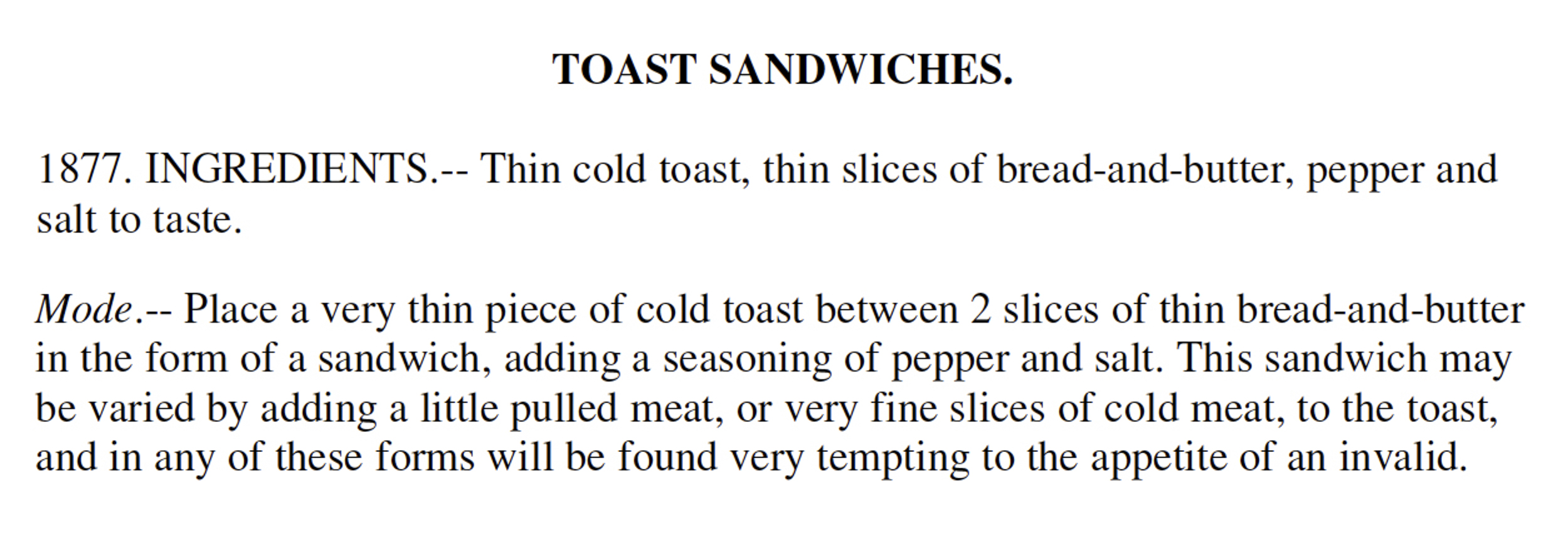
I had to know more about this!
Mrs. Beeton’s Book of Household Management
Mrs. Beeton’s Book of Household Management was originally published as a series of newspaper columns from 1859 to 1861 in Isabella Beeton’s husband’s publication The Englishwoman’s Domestic Magazine. Mr Beeton then published the collection as a book in 1861, when Isabella was 25 years old.
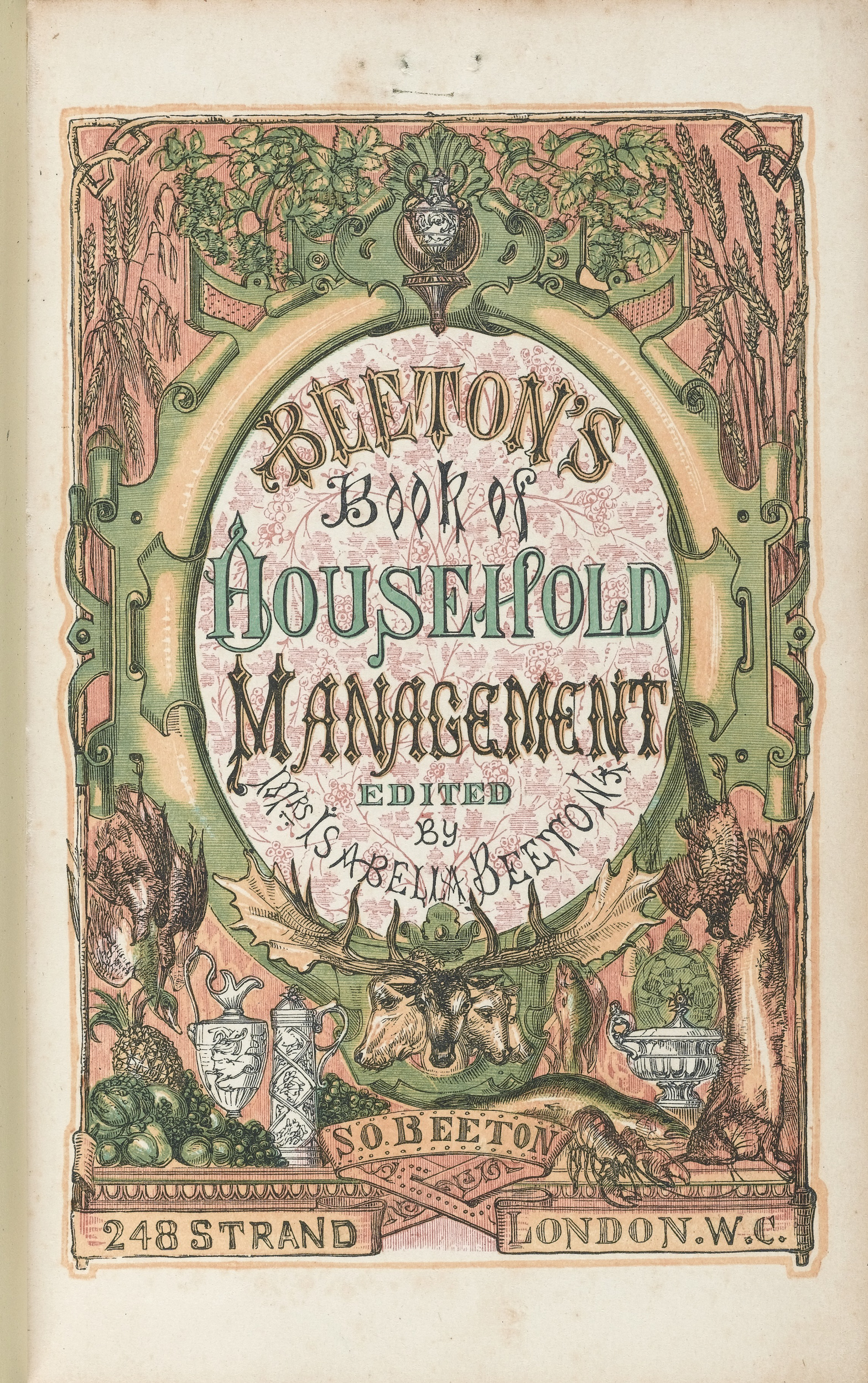
Back in the day, this was the ultimate in household management for the Victorian housewife, containing “all that was needed for a newly-married woman to face keeping house with confidence—what kitchen equipment to buy, how to clean everything, what servants to have, what to look for in hiring them, how to raise children and cure their diseases, and much more. Throughout the book there are paragraphs describing all the plants and animals used for food, with illustrations of them in their natural habitat”. (Source: ExClassics)
Indeed, in the introduction, Isabella explains that the book has “followed the animal from his birth to his appearance on the table; [has] described the manner of feeding him, and of slaying him, the position of his various joints, and, after giving the recipes, [has] described the modes of carving Meat, Poultry, and Game.”
Moving on to the subject of cheese, Mrs Beeton advises
It is well known that some persons like cheese in a state of decay, and even ‘alive’. There is no accounting for tastes, and it maybe hard to show why mould, which is vegetation, should not be eaten as well as salad, or maggots as well as eels. But, generally speaking, decomposing bodies are not wholesome eating, and the line must be drawn somewhere. (Section 1638)
Try telling my mother that.
Her macaroni cheese recipe suggests boiling the macaroni for 1 1/2 to 1 3/4 hours (section 1645), and if your cheese has become dry, you may pound it with a mortar and spread it on bread. This is, apparently, the “best way of eating it for those whose digestion is weak”. If you press it into a jar and cover it with clarified butter it will keep for several days (section 1648).
Yummy.
And it’s not just about food . . .
There are also hints on how to dress and behave when visiting people for different purposes and at different times of the day. For example, you must not take your dog into another lady’s drawing room, nor your children, unless they are “particularly well-trained and orderly”. The children can, however, be taken in your carriage and are to remain in it until the visit is over (section 28).
The book includes gems such as (section 2153)
It is the custom of “Society” to abuse its servants,—a façon de parler, such as leads their lords and masters to talk of the weather, and, when rurally inclined, of the crops,— leads matronly ladies, and ladies just entering on their probation in that honoured and honourable state, to talk of servants, and, as we are told, wax eloquent over the greatest plague in life while taking a quiet cup of tea. Young men at their clubs, also, we are told, like to abuse their “fellows,” perhaps not without a certain pride and pleasure at the opportunity of intimating that they enjoy such appendages to their state.
Continuing on (this is a long section . . .):
It is another conviction of “Society” that the race of good servants has died out, at least in England, although they do order these things better in France; that there is neither honesty, conscientiousness, nor the careful and industrious habits which distinguished the servants of our grandmothers and great-grandmothers; that domestics no longer know their place; that the introduction of cheap silks and cottons, and, still more recently, those ambiguous “materials” and tweeds, have removed the landmarks between the mistress and her maid, between the master and his man.
Well then.
There follows a lengthy section about the duties of various servants, which notes that hairdressing is the most important part of a lady’s maid’s duties (section 2248). And in case you wanted to make your hair grow, it recommends equal quantities of olive oil and spirit of rosemary, mixed with a few drops of oil of nutmeg (section 2257).
I’m a little terrified about the medicinal preparation Clyster (section 2582), which is described as two tablespoonfuls of oil or turpentine in a pint of warm gruel. If anyone can tell me what that was for, I’d love to know. (I think.)
Also, you should never hang a drowned person up by their heels (section 2767).
The history of the book
Isabella died in 1865 and her husband sold the rights to the book the publishers Ward, Lock and Tyler. They continued to publish the book, updating it several times, as well as selling sections as stand-alone books. The book was popular in Australia, and the 1891 edition even included a section about Australian cooking.
As new editions appeared, much of the original content was removed. The final edition from the 1960s had very little, if any trace of Isabella’s work remaining. If you look around on the internet you can find many many versions, including a 1909 edition with 2056 pages, which will set you back $US976.
I suspect reading through this would be invaluable research if you were a writer wanting a glimpse of the lives of wealthy people in 1860s England.
The toast sandwich
But anyway, back to the toast sandwich. I didn’t actually read the bit in the recipe that said ‘cold toast’ and I used warm toast. That was actually good because it made the butter more spreadable.
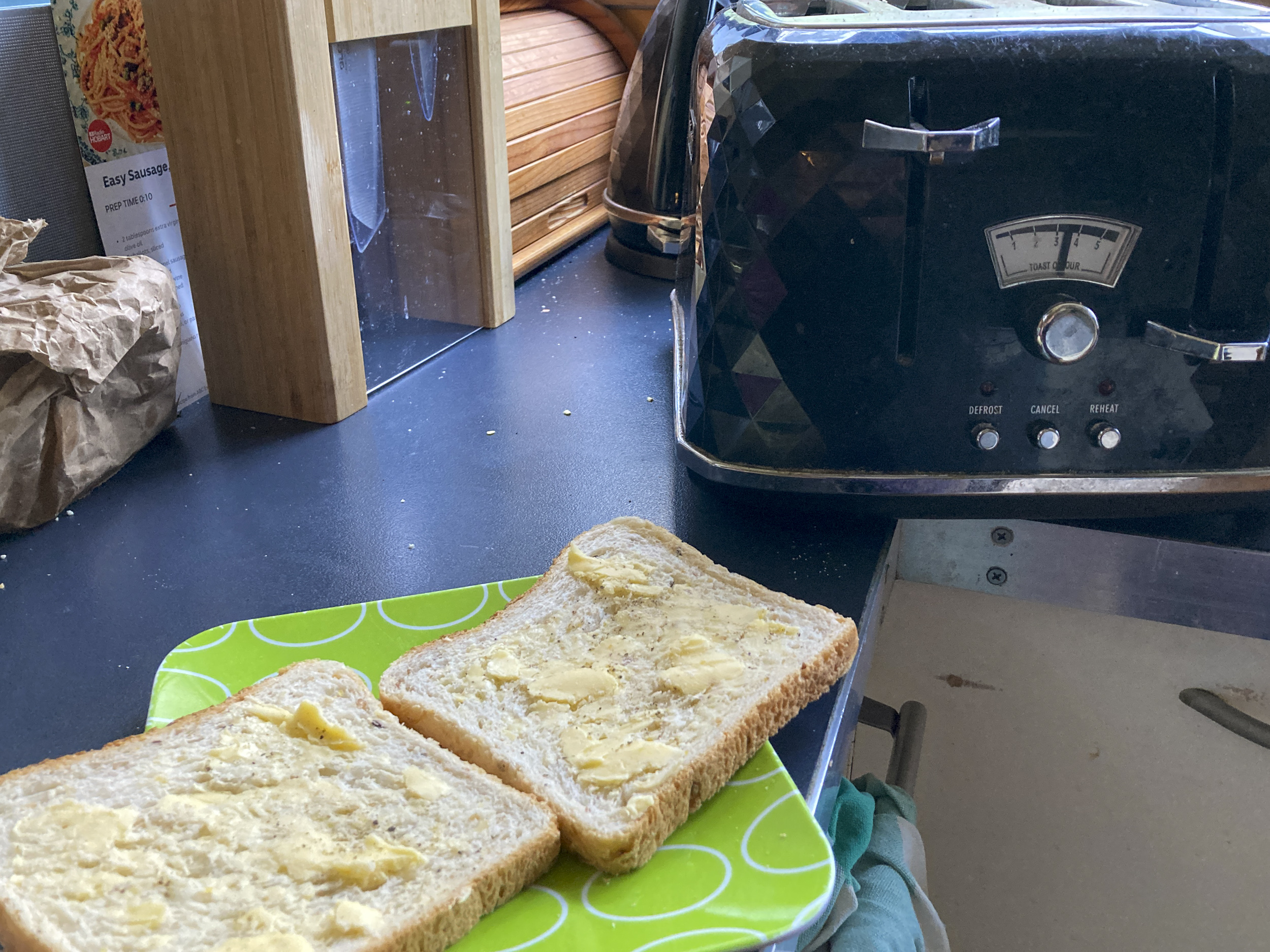
The non-compliant toast sandwich was, surprisingly, not unpleasant.
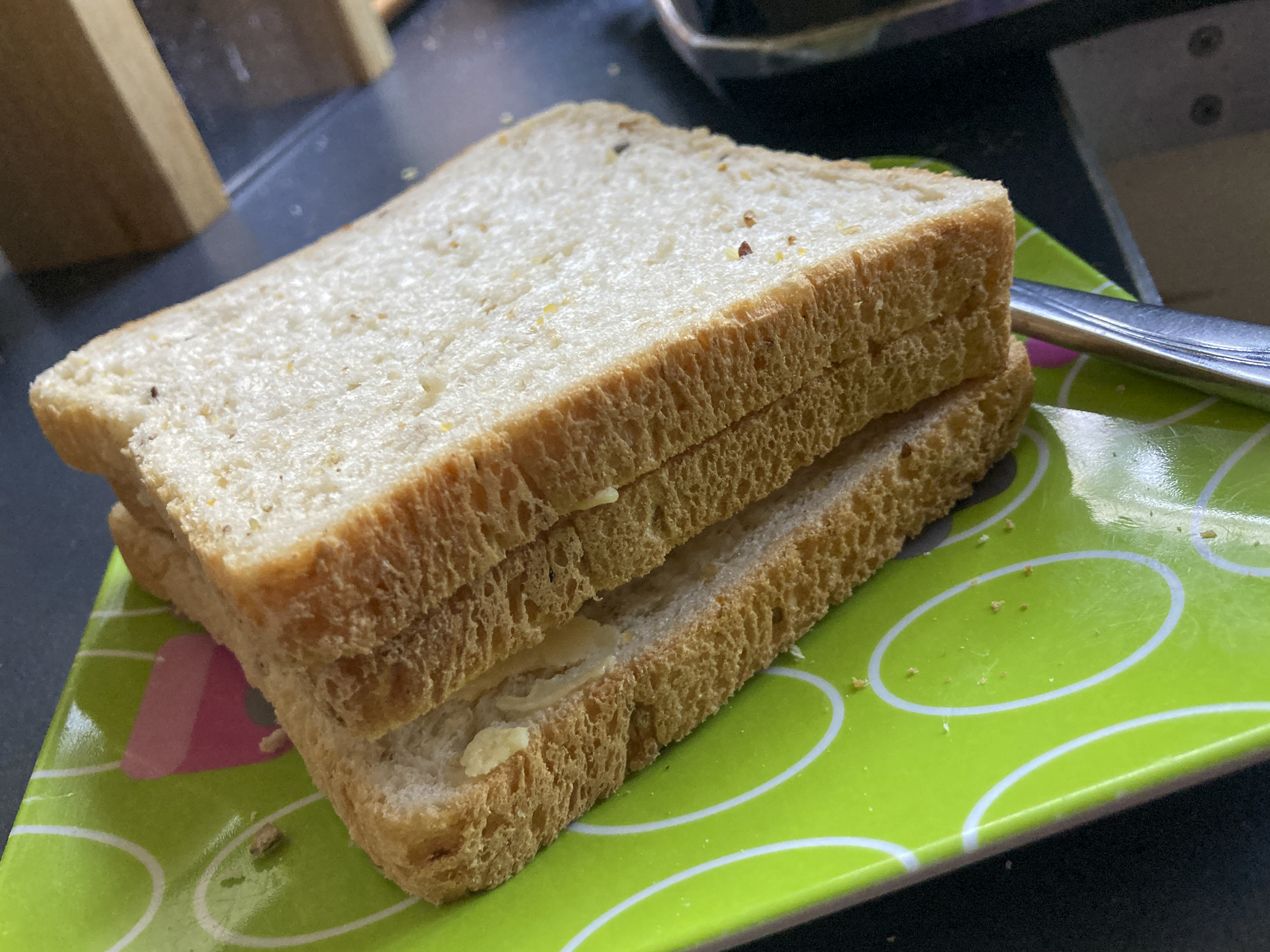
Honeychild’s awesome winter feasting goodness
From food for invalids to an amazing winter feast!
I’ve written before (last year’s winter feast, for example) about the amazingness that is Honeychild’s Creole food.
This week it was time again for Toni’s annual winter feast, and we were very willing participants.
We selected the smoked pork with Jezebel sauce, with a side serving of Cajun corned brisket. Both of these were divinely smoky and tender and delicious. Adding the side serving meant we had enough for lunch the next day as well. Winning!
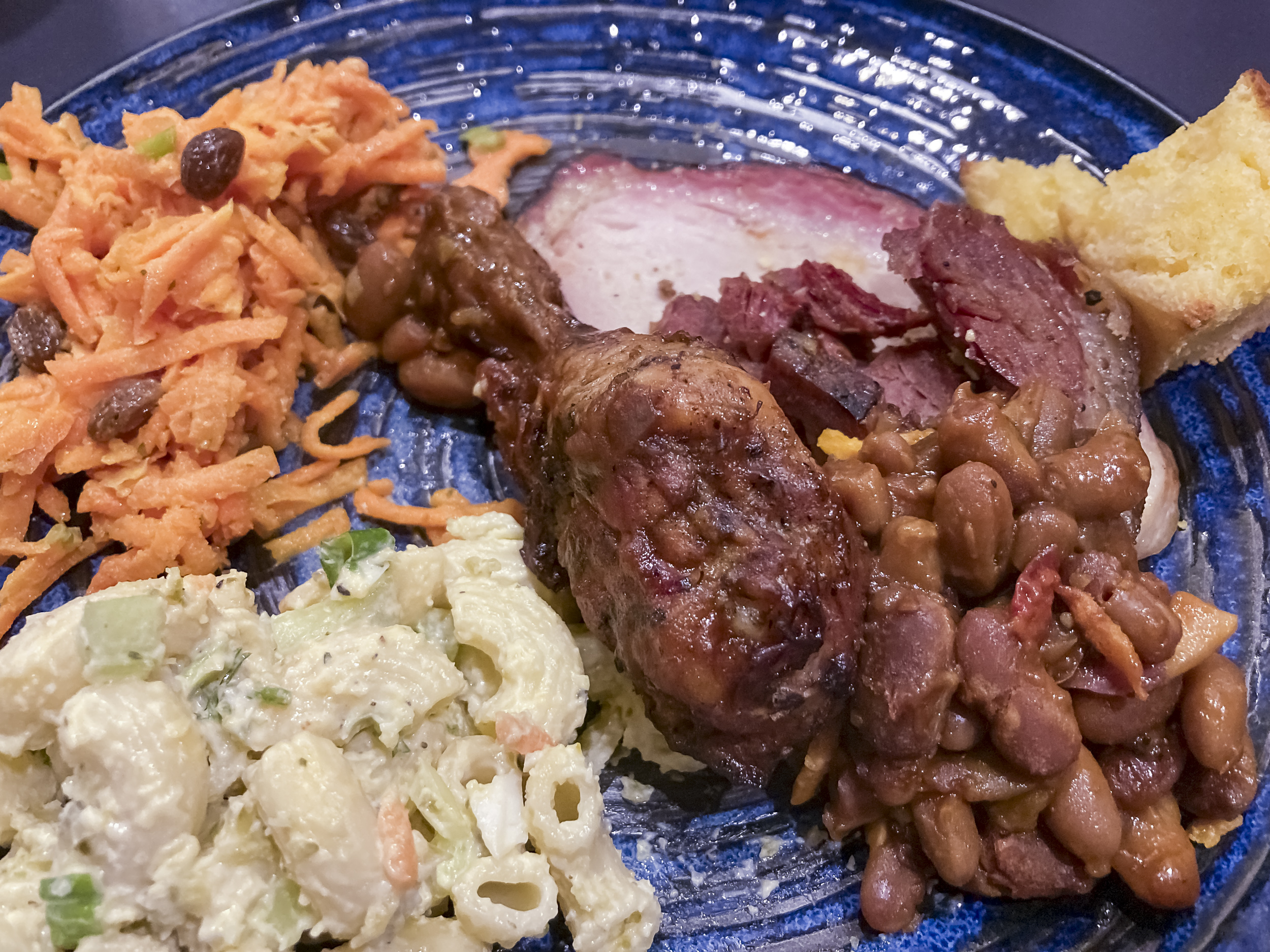
Then three amazing side dishes: bacon baked beans with cornbread, macaroni salad and carrot slaw.
Earlier in the week Toni had asked whether I wanted red velvet cake or carrot cake . . . and I mean, how do you choose? I said, well the carrot cake was the best carrot cake we’d ever had so it would be only fair to see how good the red velvet cake was. (As if it was going to be anything other than brilliant.)
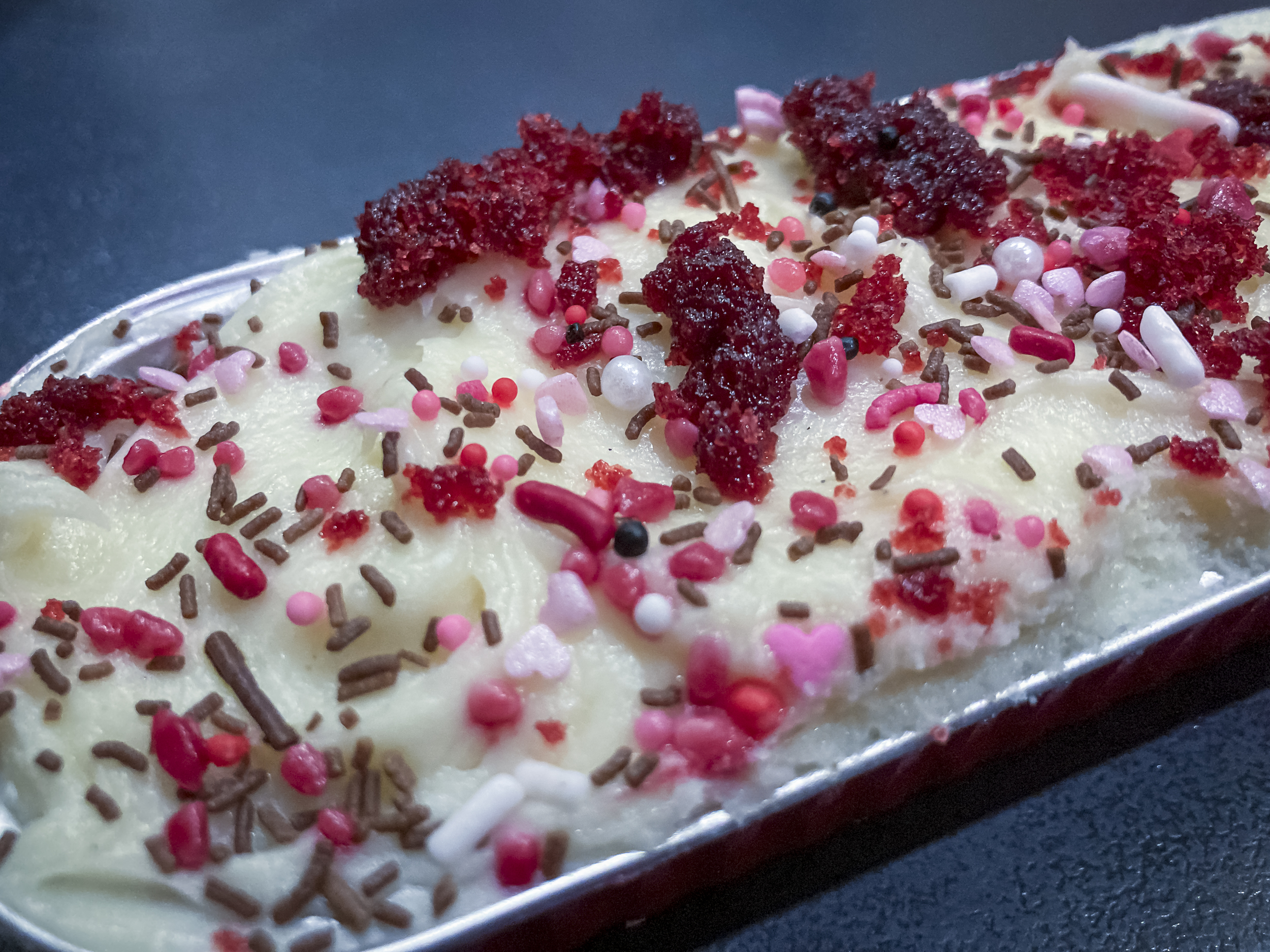
It did not disappoint. It was absolutely sensational! I thought I’d have half and leave the rest for the next day, but no, that wasn’t possible. It was soooo good.
We also got to try the raspberry and peach cobbler, which was equally delightful.
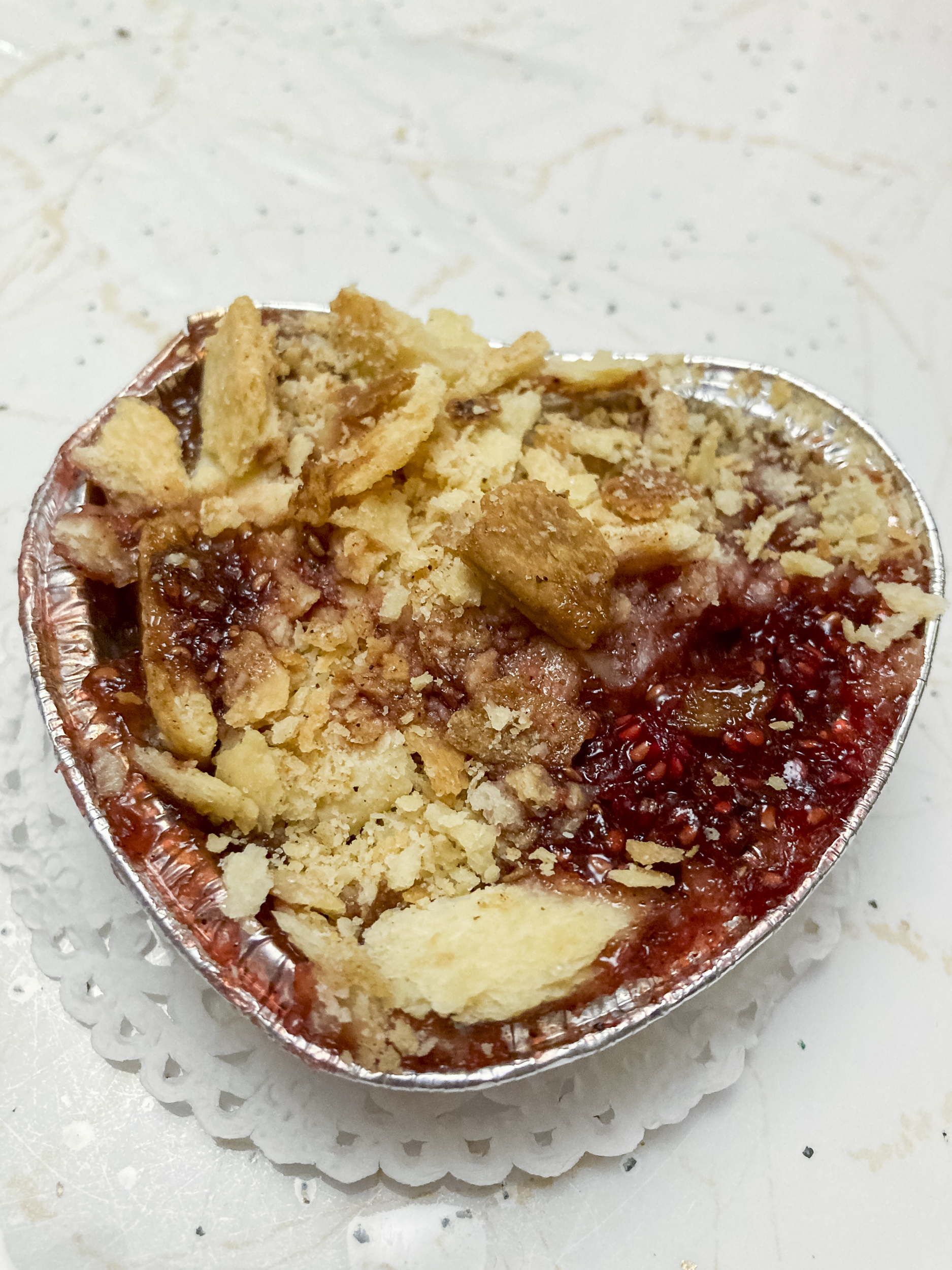
It was a stunning midwinter treat and I’m so happy to have finally been feeling better so I could enjoy it all.
Week 26 summary
Habit tracker
- 9.10 shutdown: 7/7 days
- 8,000 steps: 2/2 days (I was sick the rest of the week and wasn’t up for walking in the cold)
What was the best thing about this week?
Apart from the midwinter feast, the other great thing this week was the Victorian State Ballet’s performance of Swan Lake on Sunday.

I’d booked my ticket for this months ago and I was really excited about going.
I’d never been to the ballet before so this was going to be a totally new experience for me. But as late as Saturday morning I thought I wasn’t going to be well enough to go and would have to give my ticket to someone else. Fortunately, by late Saturday I was feeling a lot better and off to the Theatre Royal I went on Sunday afternoon.
I’d had to look up the story because I didn’t know anything about it other than swans.
The program gave a synopsis of the story, and noted that they’d approached the final scene differently to previous versions. (Apparently there are many different endings to this ballet; most are sad but some aren’t.)
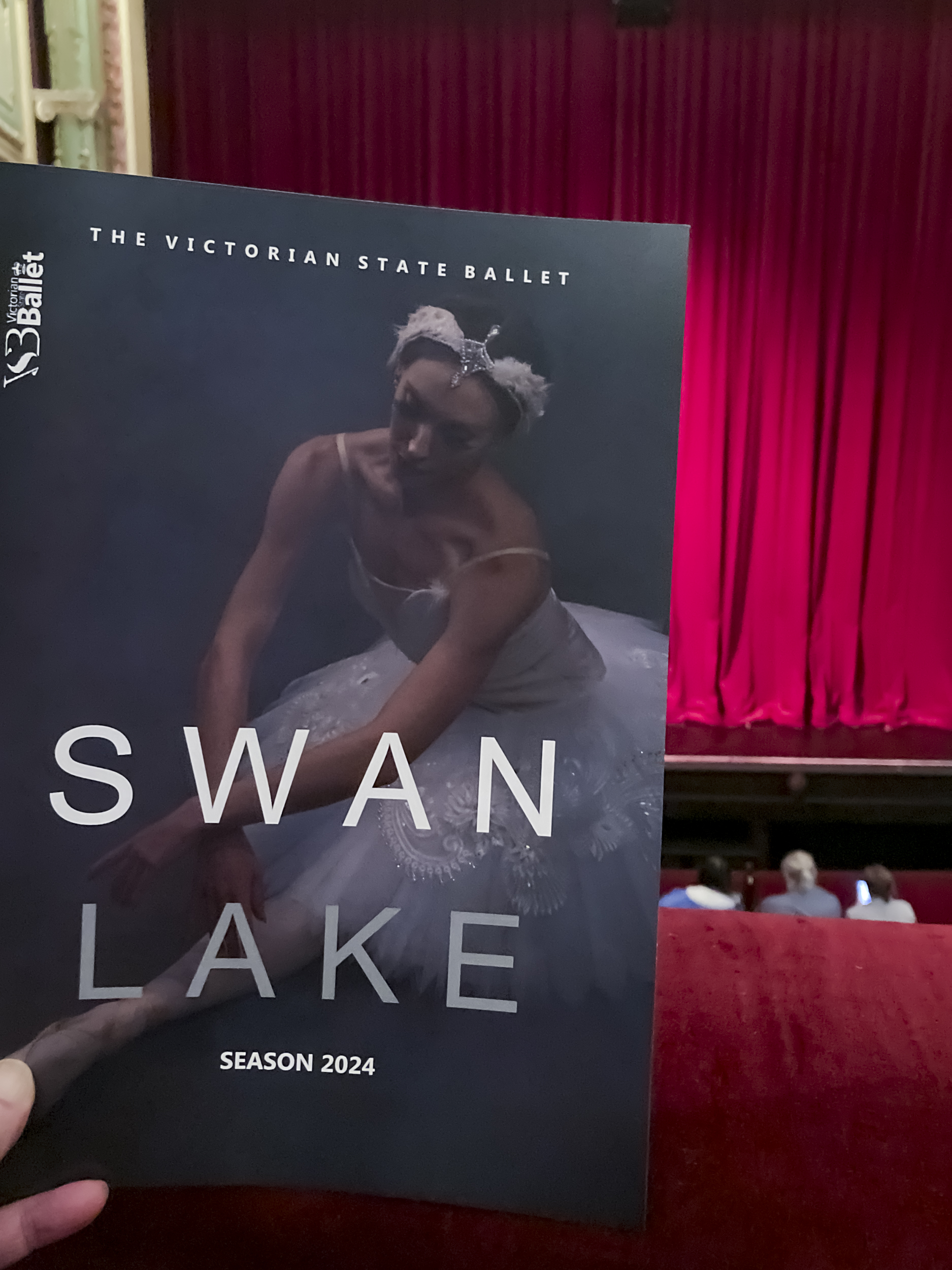
Right from the start I was transfixed. It was wonderful! The only thing I felt was not quite right was the music, which was obviously not a live orchestra. I don’t know if the Theatre Royal isn’t well set up for playing recorded orchestral music or if the mixing was a bit off but it sounded less rich and resonant than I was expecting.
Otherwise, it was the most magical experience. The two and a half hour performance flew by (like a swan!), the dancers were outstanding and the costumes were beautiful. I was so glad I went.
Lil Sis’s friend’s daughter was one of the youth dancers in the first act, which must have been a thrilling experience for her.
It was a great way to end what had been a pretty miserable week.
What did I notice this week?
There were two kelp gulls on the beach with a juvenile.
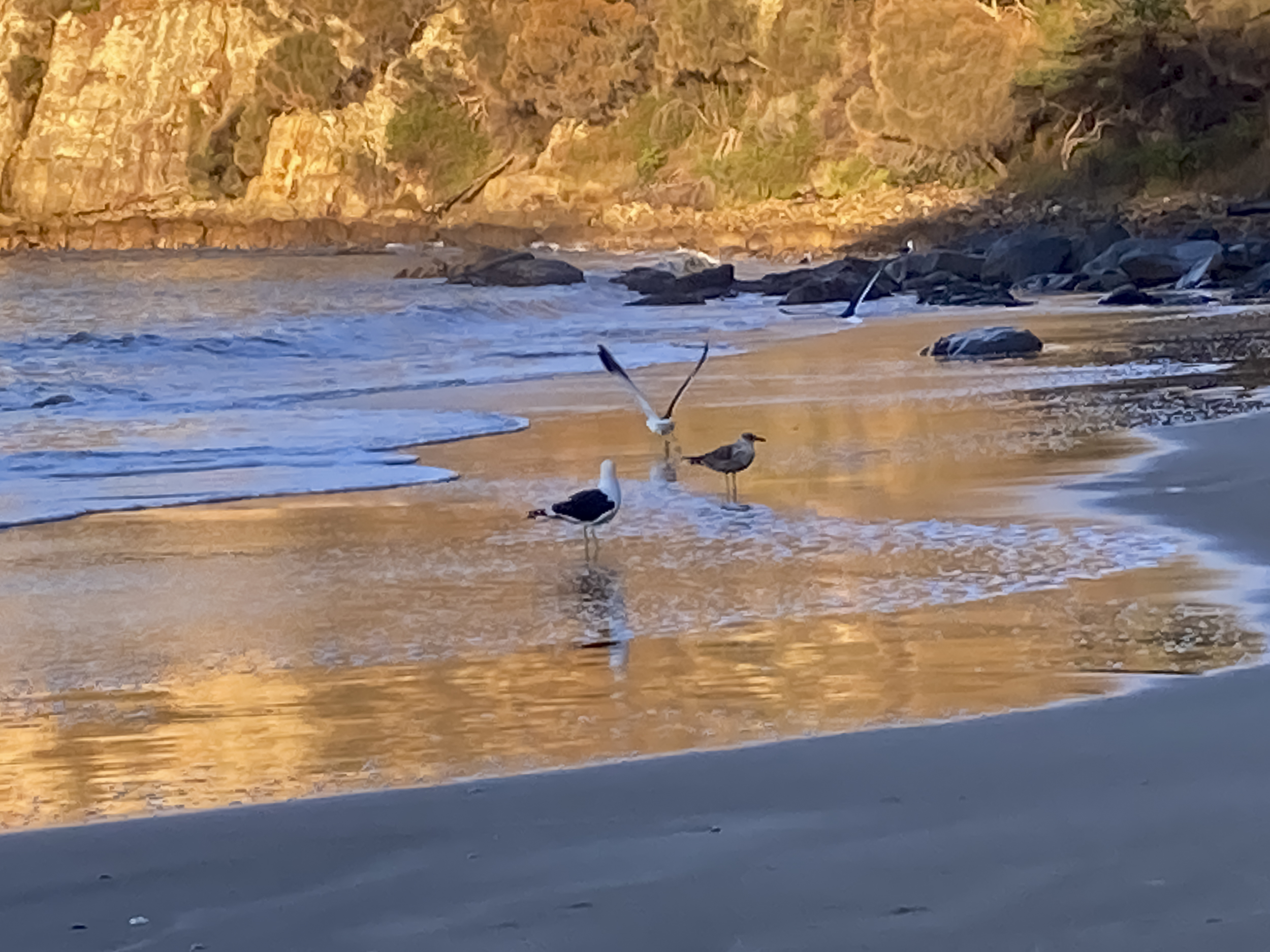
I wonder if they were related
What did I learn this week?
From the Swan Lake program, I learned “a ballerina’s pointe shoes are unique to each artist to ensure the perfect performance. A ballerina will go through several pairs in a week at a cost of an average of $150 per pair”.
What am I reading?
- We Are All Neurodiverse by Sonny Jane Wise
- The Premonition by Michael Lewis